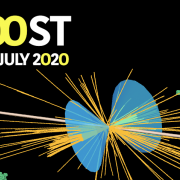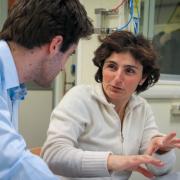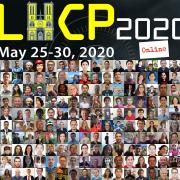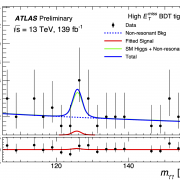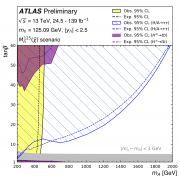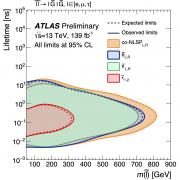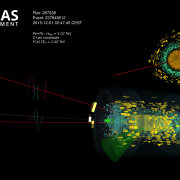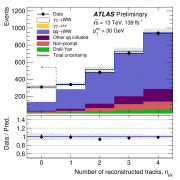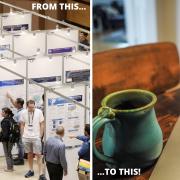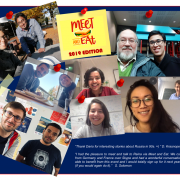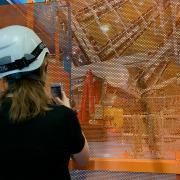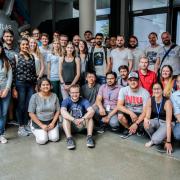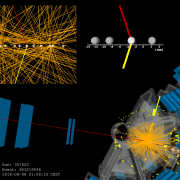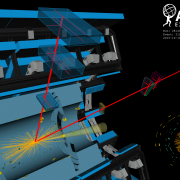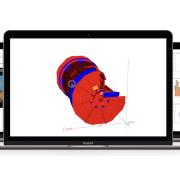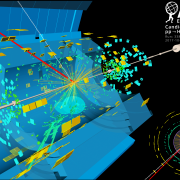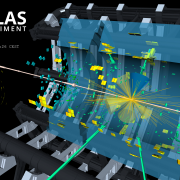Access to Collaboration Site and Physics Results
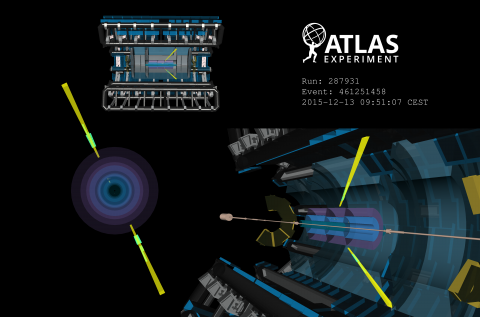
ATLAS sees first direct evidence of light-by-light scattering at high energy
– Physicists from the ATLAS experiment at CERN have found the first direct evidence of high energy light-by-light scattering, a very rare process in which two photons – particles of light – interact and change direction. The result, published today in Nature Physics, confirms one of the oldest predictions of quantum electrodynamics (QED).Read more →
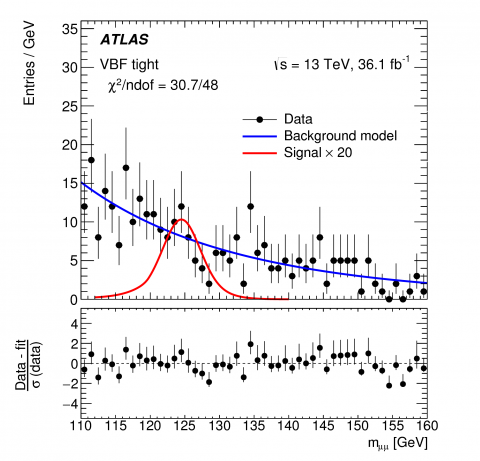
Exploring rare decays of the Higgs boson
– Since discovering a Higgs boson in 2012, the ATLAS and CMS collaborations have been trying to understand whether this new particle is the Higgs boson as predicted by the Standard Model, or a Higgs boson from a more exotic model containing new, as yet undiscovered, particles. The answer lies in the properties of the Higgs boson.Read more →
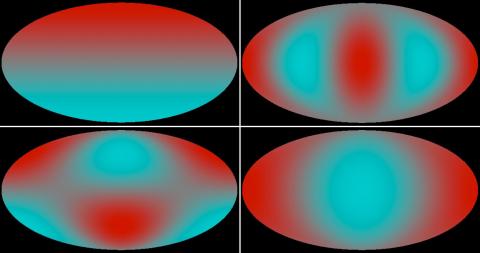
5 fundamental parameters from top quark decay
– For many physicists, discovering “new physics” means bringing to light a new particle. Another path to discovery lies in carefully measuring the properties of known particles and the interactions between them. The ATLAS experiment has now released new results on the top quark's interaction with the charged intermediate vector boson.Read more →
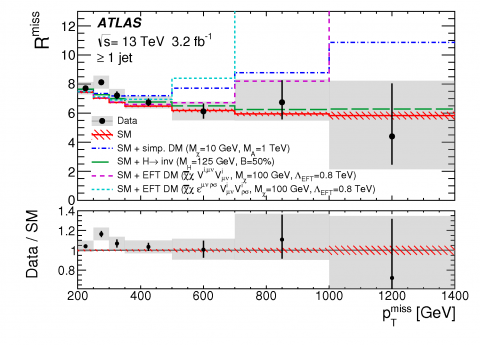
The invisible plan
– As the Large Hadron Collider (LHC) smashes together protons at a centre-of-mass energy of 13 TeV, it creates a rich assortment of particles that are identified through the signature of their interactions with the ATLAS detector. But what if there are particles being produced that travel through ATLAS without interacting? These “invisible particles” may provide the answers to some of the greatest mysteries in physics.Read more →
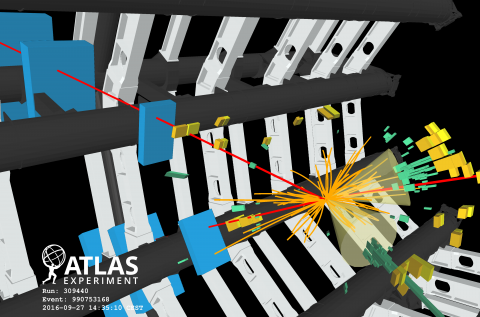
ATLAS highlights from EPS-HEP 2017
– The ATLAS Collaboration has presented important new results at the European Physical Society conference on High Energy Physics (EPS-HEP) in Venice (Italy), including the latest analyses of 13 TeV Run 2 data from the Large Hadron Collider (LHC).Read more →

Probing physics beyond the Standard Model with heavy vector bosons
– Although the discovery of the Higgs boson by the ATLAS and CMS Collaborations in 2012 completed the Standard Model, many mysteries remain unexplained. For instance, why is the mass of the Higgs boson so much lighter than one would expect and why is gravity so weak?Read more →
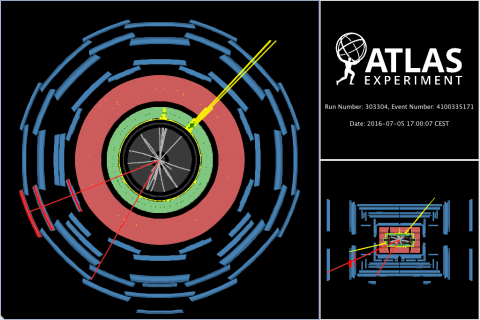
New rare pairs of heavy friends in ATLAS
– Observing rare productions of heavy elementary particles can provide fresh insight into the Standard Model of particle physics. In a new result, the ATLAS Experiment presents strong evidence for the production of a single top-quark in association with a Z boson.Read more →
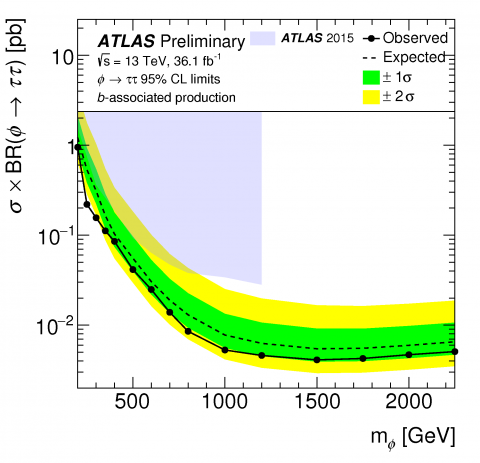
Why should there be only one? Searching for additional Higgs Bosons beyond the Standard Model
– Since the discovery of the elusive Higgs boson in 2012, researchers have been looking beyond the Standard Model to answer many outstanding questions. An attractive extension to the Standard Model is Supersymmetry (SUSY), which introduces a plethora of new particles, some of which may be candidates for Dark Matter.Read more →
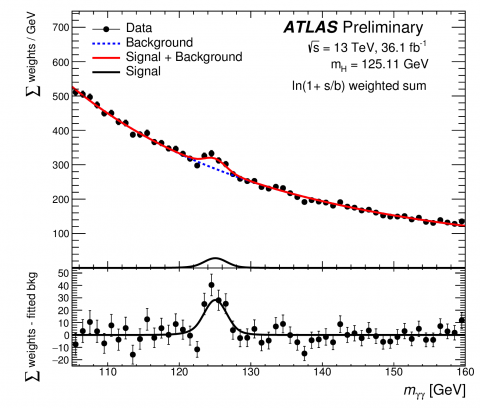
New ATLAS measurement of the Higgs Boson mass
– The ATLAS collaboration has released a new preliminary measurement of the Higgs boson mass using 2015 and 2016 LHC data. The number of recorded Higgs boson events has more than tripled since the first measurement of the Higgs boson was released, using 2011/2012 data. An improved precision in the measurement of the Higgs boson mass has been made possible by both the increased collision energy of 13 TeV and improved collision rate.Read more →
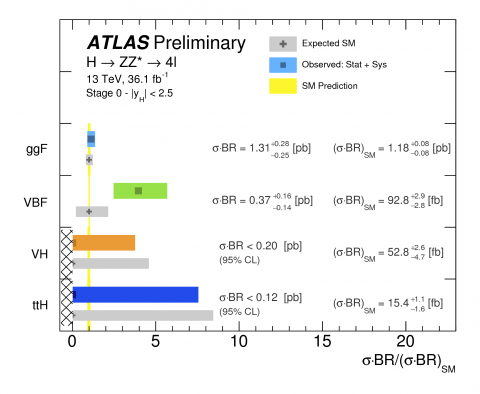
ATLAS takes a closer look at the Higgs boson’s couplings to other bosons
– Since resuming operation for Run 2, the LHC has been producing about 20,000 Higgs bosons per day in its 13 TeV proton–proton collisions. At the end of 2015, the data collected by the ATLAS and CMS collaborations were already enough to re-observe the Higgs boson at the new collision energy. Now, having recorded more than 36,000 trillion collisions between 2015 and 2016, ATLAS can perform ever more precise measurements of the properties of the Higgs bosonRead more →




